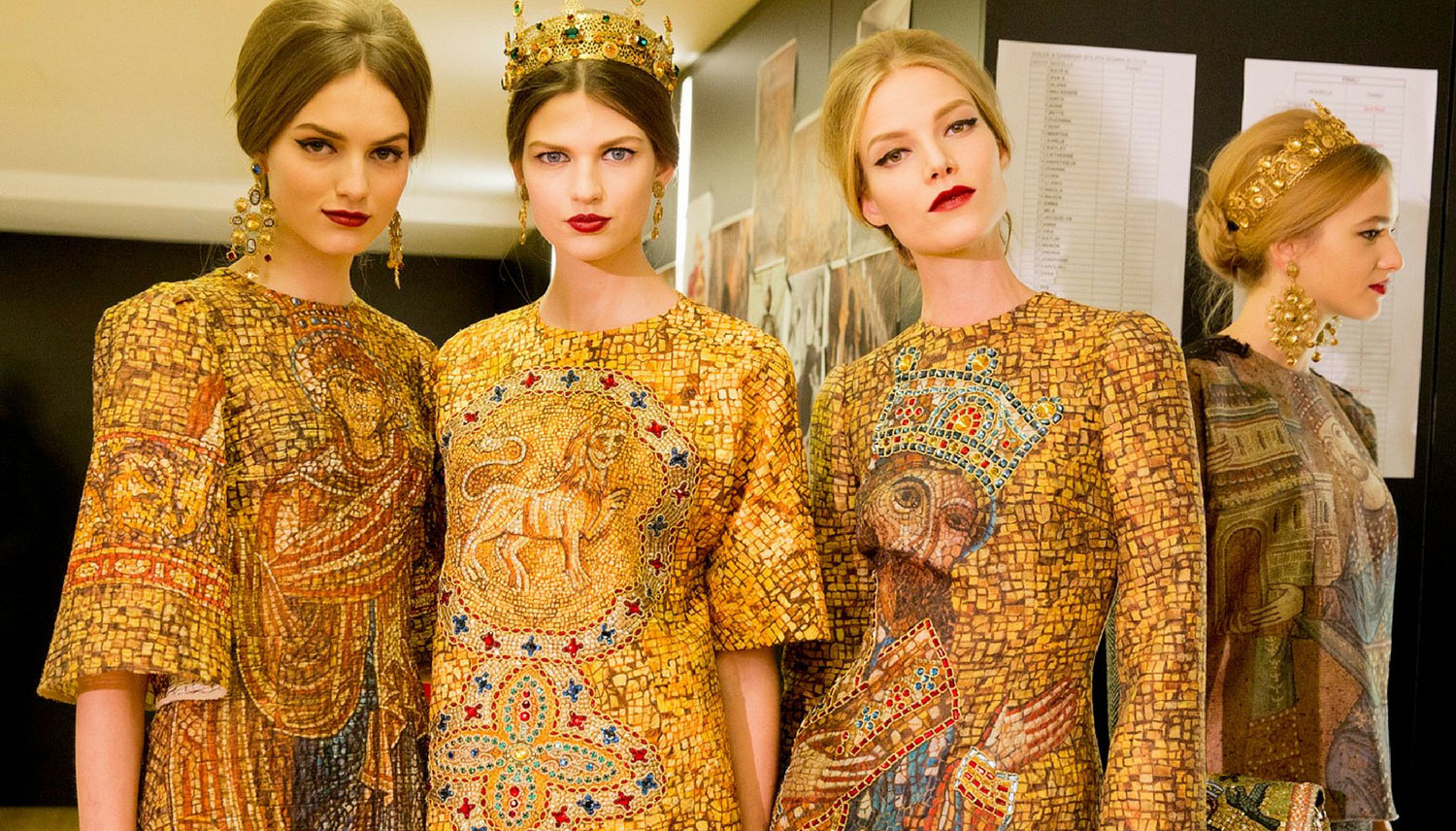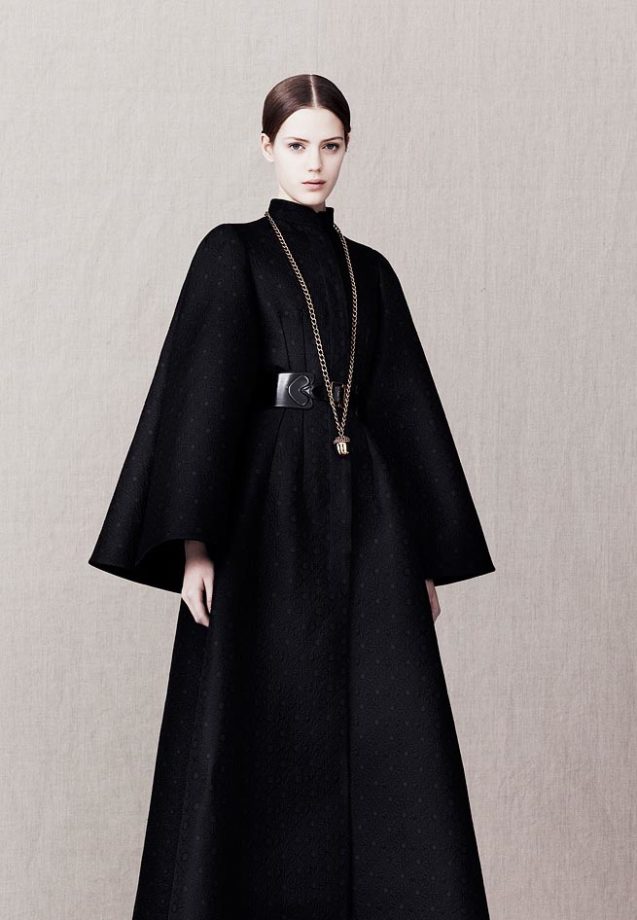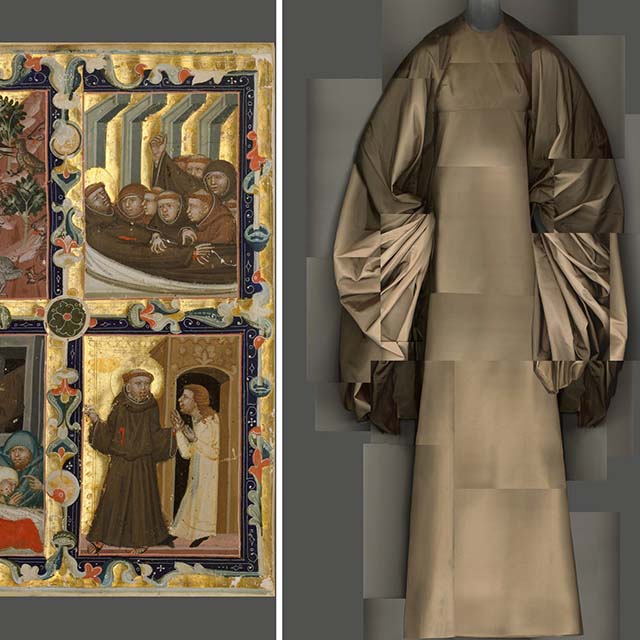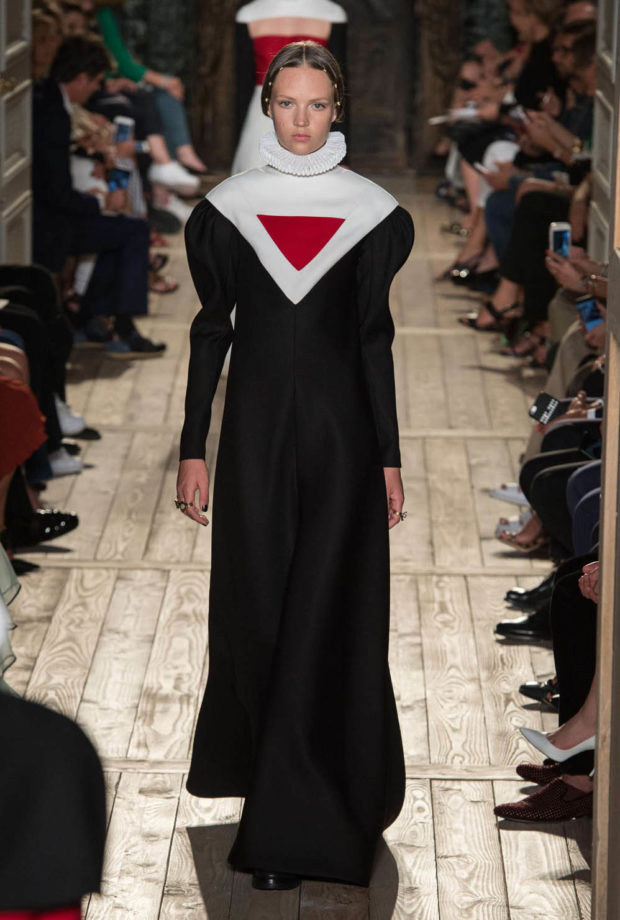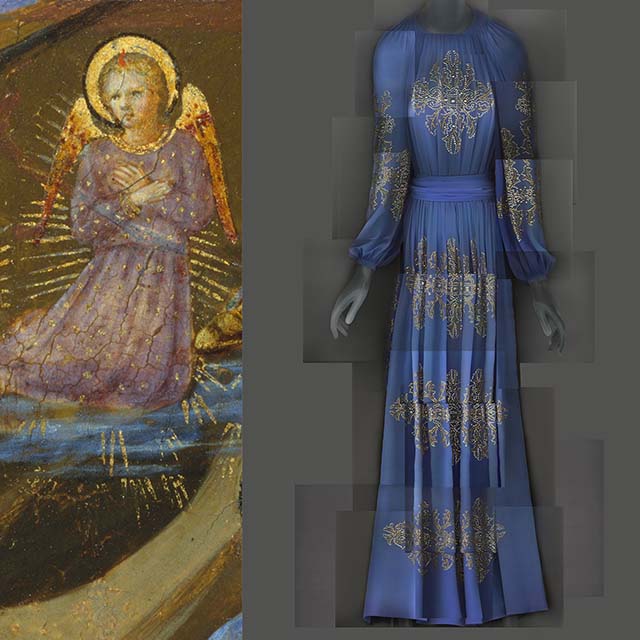THE SPIRITUAL SIDE OF FASHION
The religious dimension of fashion is the theme of the forthcoming exhibition of the Costume Institute, New York MET museum. Entitled Heavenly Bodies: Fashion and the Catholic Imagination, it will certainly raise heated debates!
When Melania and Ivanka Trump visited Pope Francis, a series of online posts dealt with their fashion choices. Although the veils and black dresses might seem laughable, it is a fact that when women officially visit the Pope they must have their shoulders covered while dressed in dark colors -unless they are members of a royal family and Roman Catholics, in which case they have the privilege to wear white clothes (privilège du blanc). That rule was also followed by both Michelle Obama and Amal Clooney, who, in general, successfully promote their image as symbols of elegance.
On the contrary, the Pope remains consistent in all his appearances, regardless of which celebrity is visiting him -even more so Pope Francis, who as a true Jesuit, restricts his choices to the white vestments. Faith’s dress code, however, has many dimensions. The Catholic Church sided with art, influenced the Renaissance and various artists, such as Michelangelo and Leonardo Da Vinci. In this manner, it became the very cause and actual trigger of principles and reactions, representing social changes, conflicts, and debates.
Hence, we find ourselves in the present, where fashion encounters the Roman Catholic dogma via the anticipated exhibition of New York’s Metropolitan Museum of Art (MET) and the Costume Institute. Entitled “Heavenly Bodies: Fashion and the Catholic Imagination,” this exhibition reaches out to faith’s spiritual space. In essence, it is a link between religion’s transcendence and its influence on fashion. Fifty ecclesiastical utensils from the Vatican, a variety of artwork from the MET, and a hundred and fifty creations of popular designers (inspired by Roman Catholicism) will be exhibited, attempting to explore the limits of the sacred which becomes human and intimate.
Commencing in May 2018, the exhibition will include the creations of designers such as Versace, Dolce & Gabbana, Valentino, Chanel, Rodarte, Lanvin, Dior, making it the biggest to-day presented by the Costume Institute. Apart from the obvious interest in the designers’ creations -e.g., Christobal Balecianga’s official coat, or Madame Grès’ all-silk bronze color dress- the visitors will be intrigued by the dialogue between the artifacts: Dolce &Gabbana’s dress (2013), inspired by the mosaics of the Monreale Duomo in Sicily, will be exhibited next to the Byzantine mosaics of the MET’s collection.The sources of inspiration are but the designers’ oxygen, who seek ideas in every part of the world and historical period. Although not quite innovative as the 2016 Manus X Machina, this exhibition is primarily focused on the social message behind each collection: the concern in regards to the world’s future, the fashion houses’ need to reach out to new audiences, expand into new markets, and increase their income.

